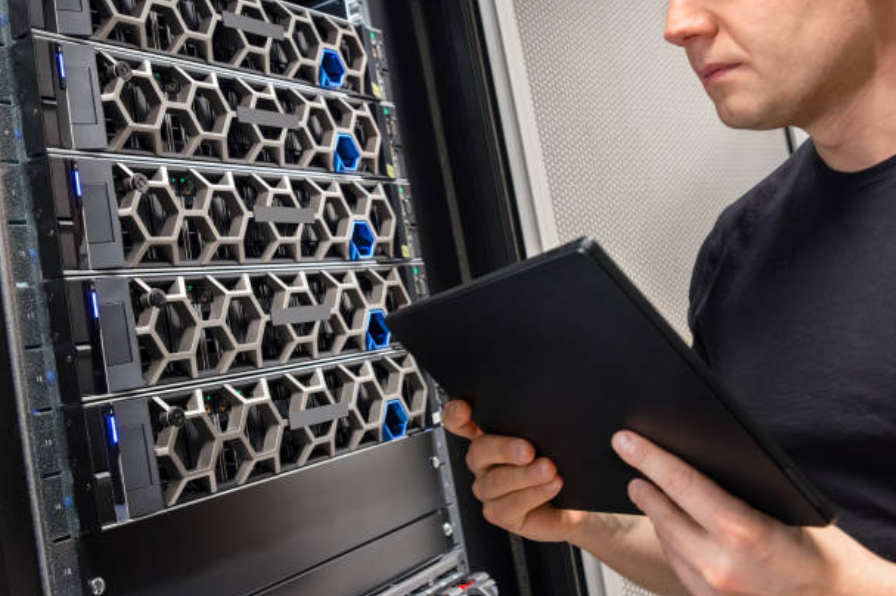Everyone will agree that innovations simplify information systems, making their implementation easier and operation more convenient. The classical infrastructure (server, storage, data network) was replaced by a convergent one that combined components into one block, and now it is being actively replaced by a hyperconvergent system that connected various blocks using the software. This architecture virtualized all the components of the classic and presented them “as a service”, giving unlimited possibilities for configuration, scaling, and management. Why do cloud providers and corporate customers choose Hyperconverged Infrastructure, what advantages do customers of innovative products get? We will consider this in today’s material.
Integrated approach
Both solutions, convergent and hyperconvergent, strive to fulfill two important tasks – to speed up the placement of the application and reduce costs for this.
In a hyperconverged infrastructure, the main role is played by software that allows you to create a single system from the resources of disparate components – the server, its disks, and network capabilities are virtualized and transferred to the user as a pool of resources that can be disposed of at your discretion, as well as easily scaled by adding new components.
HCI products come in two types. Hardware and software complex from one vendor, including proprietary hardware and software for aggregation and management. A software solution that can be installed on any manufacturer’s equipment.
Scenarios for using hyperconvergent solutions
NCI is not a solution for all occasions. Scaling may turn out to be unbalanced: for example, the client only needs to increase computing power and has to buy the entire block. In addition, there are problems with deploying some applications in virtual environments.
The two main scenarios for using hyperconverged systems are remote offices and virtualized workstations. With a homogeneous load, the main advantage of a hyperconvergent system is easy scalability. Let’s say 1 thousand jobs are required today – we buy ten HCI nodes. Tomorrow we need 1.5 thousand – we will buy five more. This greatly simplifies the deployment of the computing infrastructure of a remote office or branch. At the same time, it is not necessary to look for local specialists to launch and support the system, especially since they may not be.
However, other application scenarios are also possible. For example, it is easier to combine diverse computing systems when merging companies when integrating on HCI systems. And not only when combined – migration from expensive highly reliable computing systems running business–critical applications to commodity solutions used in the NSI can save a lot of money without reducing reliability indicators.
And, of course, flexible hyperconvergent systems are convenient for developing and testing new business applications.
Advantages of Hyperconverged Infrastructure
Hyperconverged infrastructure has many valuable advantages. First of all, it is an innovative technology that for sure will become mainstream in the coming years and will greatly advance the classical approaches to building a data center. HCI helps to “comb” a disparate IT environment, and get rid of the need to manage multiple systems, which brings both executive order and financial efficiency. In addition, capital and operating expenses are reduced. With a classic infrastructure, a staff of specialists is needed, each of whom is an expert in his field when one group of administrators can manage HCI and all its components.
Hyperconvergent infrastructure, as a software solution, gives almost unlimited freedom of choice of components, flexibility in construction, and excellent integration with other nodes of the IT landscape. Thanks to easy scaling (increasing the number of components), HCI allows you to quickly adapt to business needs, and perform any task with minimal labor costs. The solution shows high performance and can cope with any load with the support of high-speed equipment. Capital costs are reduced by 50%, and operating costs by 30%. Such results are achieved due to more efficient use of existing hardware, as well as lower cost of equipment as part of a ready-made solution. When using HCI in a private cloud, it can always be scaled to the public clouds of hundreds of vendors. The infrastructure contains built-in tools to ensure the security of data storage and transmission.
And one of the important advantages is minimal Time–to-Market: from unpacking the box (or installing it on your equipment) to launching business applications, it takes only a couple of days. In the classical infrastructure, everything happens much slower. It takes 1-2 weeks to install individual components, switch everything to the network, configure management software and test the operation.
In summarizing, we can highlight several main advantages of HCI – flexibility, simplicity, and ease of administration. If you overcome skepticism and study how HCI works, then its use increases the competitiveness of the business and allows it to change faster to meet the needs of the market.
 The use of hyperconvergent infrastructure allows you to reduce significantly the cost of services provided without loss of quality and computing power. The main saving factors are the reduction of implementation and maintenance costs, as well as the “omnivorous” technology. The absence of a “vendor lock” allows you to use “top-end” equipment of not the most famous and expensive brands, getting high performance with low capital investments.
The use of hyperconvergent infrastructure allows you to reduce significantly the cost of services provided without loss of quality and computing power. The main saving factors are the reduction of implementation and maintenance costs, as well as the “omnivorous” technology. The absence of a “vendor lock” allows you to use “top-end” equipment of not the most famous and expensive brands, getting high performance with low capital investments.
More from us: This website lets you build your own iPhone 14 or enhance Apple’s design
Hyperconvergent systems show rapid steady growth in the infrastructure solutions market, global sales of HCI are increasing and it is predicted that this will continue in the next few years. HCI is gradually replacing traditional and well-known solutions, as they are more economical, simpler, and much more convenient to operate. The ability to outsource the design and integration of the main components of the data center to the manufacturer of a hyperconvergent solution, allows you to use your engineers in other areas of IT more effectively, or even reduce the staff. Economy and functionality are one of the most important roles of current innovative technologies.